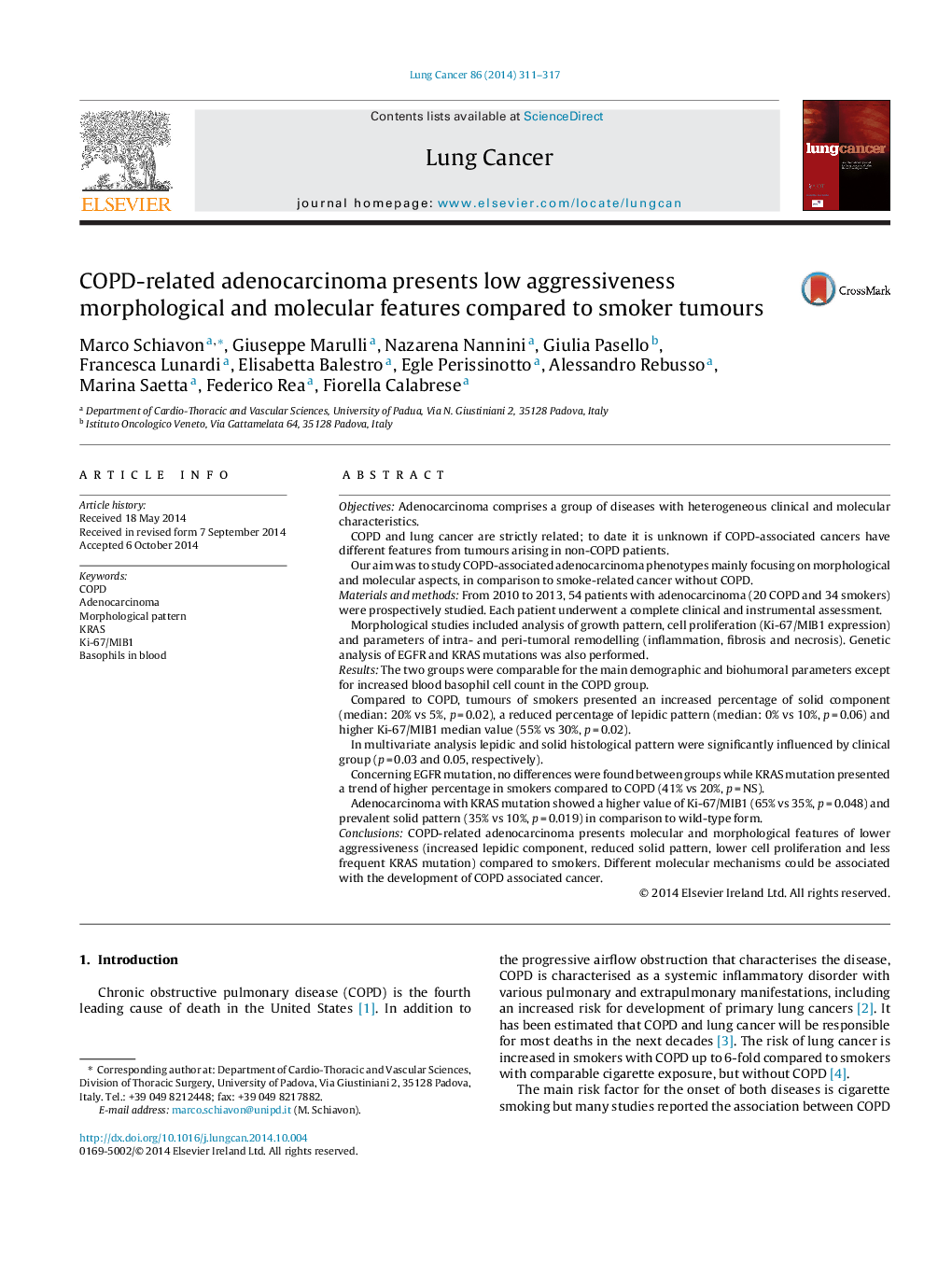| کد مقاله | کد نشریه | سال انتشار | مقاله انگلیسی | نسخه تمام متن |
|---|---|---|---|---|
| 2140834 | 1088266 | 2014 | 7 صفحه PDF | دانلود رایگان |

• COPD and lung cancer are two diseases strictly related.
• COPD-associated adenocarcinoma was studied in comparison to smoke-related cancer without COPD.
• COPD-associated adenocarcinoma presents clinical and histological features of lower aggressive tumour.
• Different cancerogenic mechanisms could be associated with COPD associated cancer.
ObjectivesAdenocarcinoma comprises a group of diseases with heterogeneous clinical and molecular characteristics.COPD and lung cancer are strictly related; to date it is unknown if COPD-associated cancers have different features from tumours arising in non-COPD patients.Our aim was to study COPD-associated adenocarcinoma phenotypes mainly focusing on morphological and molecular aspects, in comparison to smoke-related cancer without COPD.Materials and methodsFrom 2010 to 2013, 54 patients with adenocarcinoma (20 COPD and 34 smokers) were prospectively studied. Each patient underwent a complete clinical and instrumental assessment.Morphological studies included analysis of growth pattern, cell proliferation (Ki-67/MIB1 expression) and parameters of intra- and peri-tumoral remodelling (inflammation, fibrosis and necrosis). Genetic analysis of EGFR and KRAS mutations was also performed.ResultsThe two groups were comparable for the main demographic and biohumoral parameters except for increased blood basophil cell count in the COPD group.Compared to COPD, tumours of smokers presented an increased percentage of solid component (median: 20% vs 5%, p = 0.02), a reduced percentage of lepidic pattern (median: 0% vs 10%, p = 0.06) and higher Ki-67/MIB1 median value (55% vs 30%, p = 0.02).In multivariate analysis lepidic and solid histological pattern were significantly influenced by clinical group (p = 0.03 and 0.05, respectively).Concerning EGFR mutation, no differences were found between groups while KRAS mutation presented a trend of higher percentage in smokers compared to COPD (41% vs 20%, p = NS).Adenocarcinoma with KRAS mutation showed a higher value of Ki-67/MIB1 (65% vs 35%, p = 0.048) and prevalent solid pattern (35% vs 10%, p = 0.019) in comparison to wild-type form.ConclusionsCOPD-related adenocarcinoma presents molecular and morphological features of lower aggressiveness (increased lepidic component, reduced solid pattern, lower cell proliferation and less frequent KRAS mutation) compared to smokers. Different molecular mechanisms could be associated with the development of COPD associated cancer.
Journal: Lung Cancer - Volume 86, Issue 3, December 2014, Pages 311–317